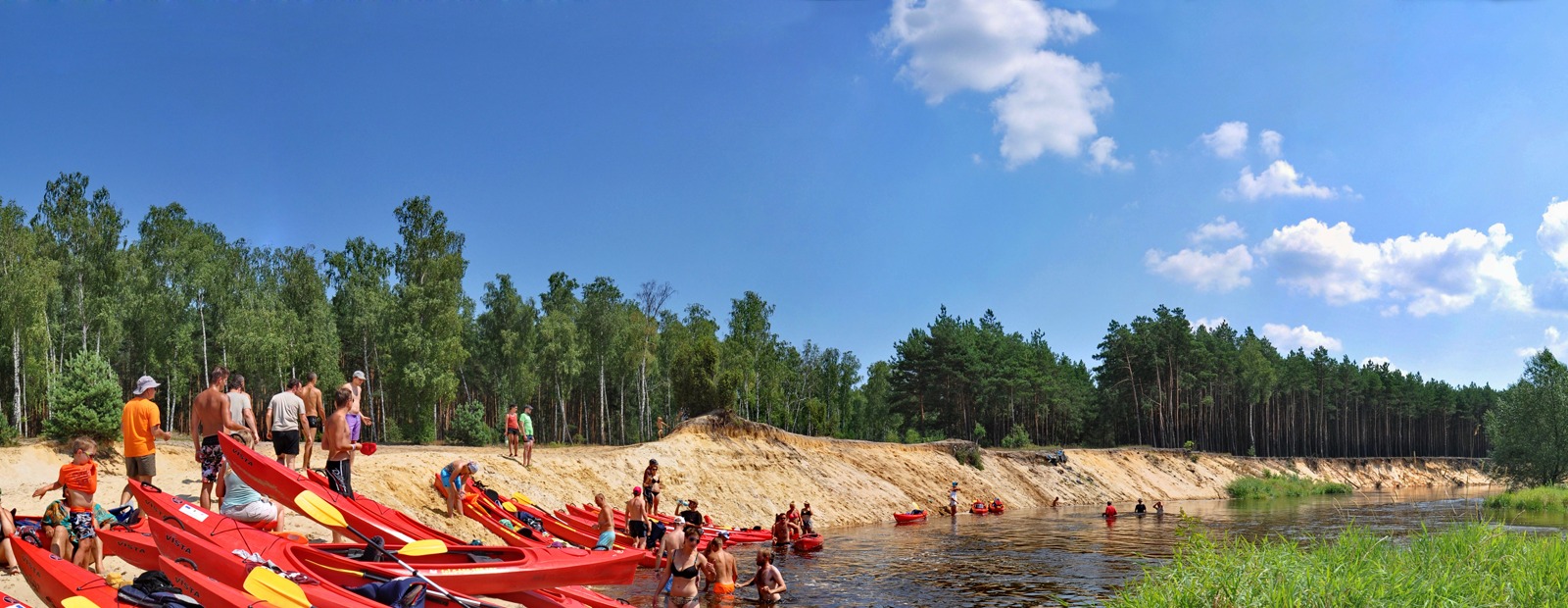
BLOG
Kayaks and the overcoming of obstacles

Every river is a surface flow that runs in a natural channel. From the point of view of kayak tourism, the more natural the river is, the better, as it is more interesting. Kayaking on the controlled channels may be easier, but it is certainly more boring. It is good if “there is much stuff going on” during a kayak rally: the shallows, a bend, a fallen tree. How to avoid obstacles?
First, coordination. The cox, namely the person sitting in the back, in fact steers the kayak but sees little. It is the bowman in the front who should read the water, seek the main current and tells which way to go. In practice, when inexperienced kayakers see an obstacle, they find it really difficult to agree on a joint strategy. In order to avoid the chaotic wielding with paddles, sometimes it is good to ask the bowman to stop paddling for a while.
When going over an obstacle, you often have to put down the paddles, putting them on the kayak’s side, parallel to the kayak. You have to bend as well. You always bend forward. Bending aside or backward may end in a capsize, and your face will be scratched or you will lose the sunglasses. When you are over the obstacle, you go slowly and calmly.
Kayaking on lowland rivers, in particular on the low water level, forces you to constantly watch for the main current. The shape of the bottom of the meandering river changes and the main current goes from one bank to the other. The simplest way to avoid the shallows is to follow the outer side of the bends. However, if the kayak has run aground, simply get out of it. Wading in the water is also a part of fun.
In the river, you will find many obstacles that are under the water or partially under the water such as stakes, roots or stones. If possible, you should avoid them. A closer contact with these “attractions” may result in damaged equipment or a capsize. A situation when the kayak is blocked across a strong current is particularly dangerous. You shouldn’t lean “away from the obstacle” as you only help the water that is pressing against the side to turn the boat over. You get out of trouble by tilting “toward the obstacle”.
When going on small check dams, choose the spots where the water flow is the biggest. If you find an obstacle that is too difficult to overcome, the only thing you can do is to get out and float the kayak or carry it along the bank. Before you set off, you should familiarize yourself with the route and, in particular, determine whether there are any dangerous spots on the route, impassable check dams or permanent portages, namely spots where you always have to carry the kayak along the bank. In addition, keep in mind that the river channel changes every year. That also depends on the level of water. That’s why we encounter many additional obstacles during rallies and we will have to decide by ourselves how to overcome them.
Kayaking is a kind of recreation that teaches cooperation, therefore you mustn’t ever leave your crew without help if they are in trouble. You help without unnecessary panic or sensation or mockery.
